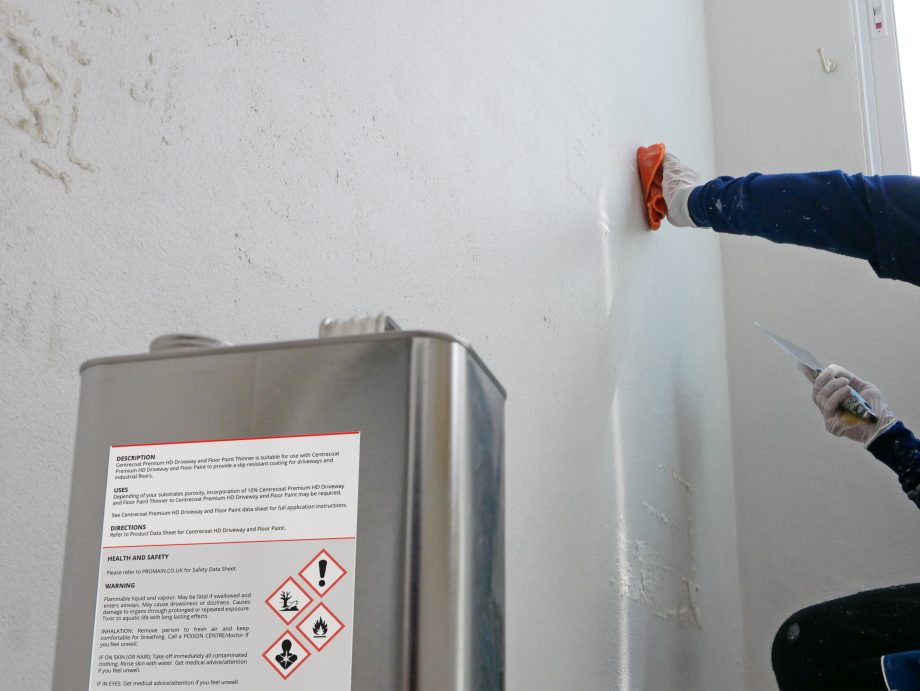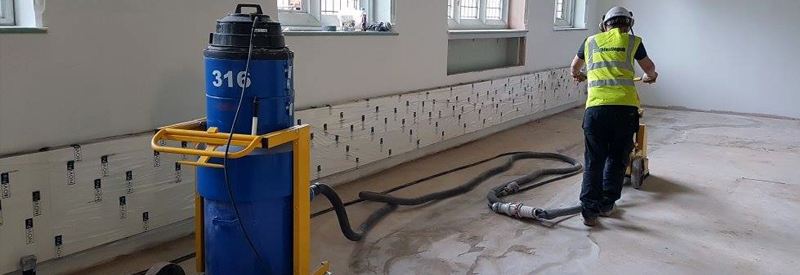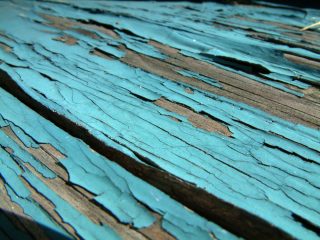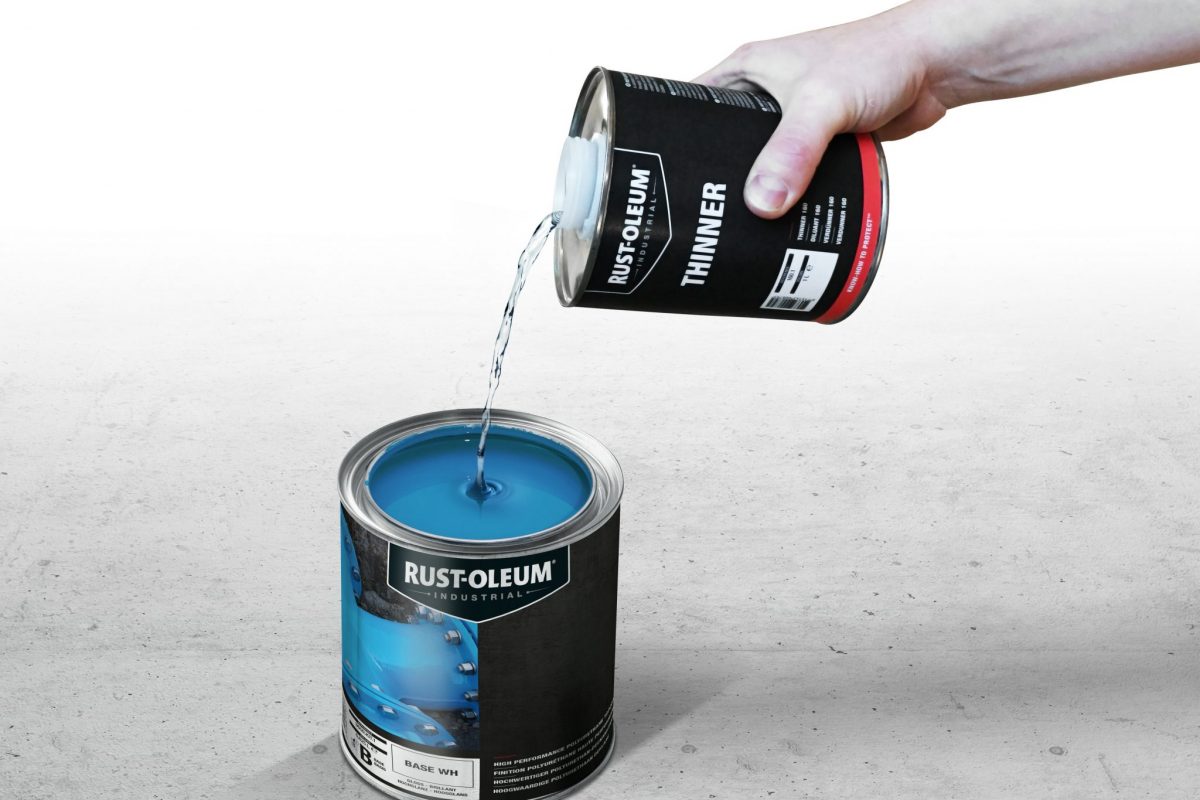When it comes to industrial paint, paint thinners are one of the paint categories that often get glossed over. Below we will discuss the differences between paint thinners and paint cleaner products. We will also discuss the pitfalls of using a paint thinner incorrectly as a paint remover.
Paint Chemistry Lesson 101: Paint Carriers
Ever wondered just how paint gets from being wet in a tin to being dry on an object?! Well if you did, it is because the paint is “carried” by another liquid onto the item being painted. For example, water based paints have water as the carrier. Solvent based paints have a paint solvent as the carrier. This could be numerous chemicals depending on the chemical makeup of the coating type. After the paint and the carrier is applied, the carrier liquid evaporates. There are some exceptions to this rule though. Some epoxy paints are complex enough to not need a carrier as they “go off” on the object – just like epoxy glue.
Types of Paint Thinners
There are many paint thinners available on the market. We will discuss the most frequently found paint thinners below. This guide will help you find the correct solvent paint remover for tools after applying certain paints.
White Spirit
You will usually find white spirit based paint thinners suitable for single pack coatings. They are typically suitable for more DIY applications at home. These white spirit paint remover products are ideal for cleaning tools when applying these types of paints.
Turpentine
You can use turpentine paint remover thinners to clean up oil-based paints. These are the types of paints you will find in hobby stores that artists use. Artists also use turps paint remover products for clean up of varnishes from tools. Turpentine has largely been replaced by turpentine substitutes obtained from petroleum spirits. Turps is also a good antiseptic product. You can find turpentine in many cleaning and hygienic products. Turpentine comes from trees, whereas white spirit comes from petroleum products.
You can use turpentine substitute for general cleaning, but we do not recommend it for paint thinning. This is as it may adversely affect drying times.
Methylated Spirits
You can use methylated spirits as a tool cleaner for products such Ardenbrite. Methylated spirit is a good cleaning agent as it is alcohol based.
Xylene Paint Thinners
Xylene is what is known as a hot solvent paint removers. It is primarily used as a paint stripping solvent that can dissolve other substances. Along with other solvents, xylene is also widely used as a cleaning agent, a thinner for paint, and in varnishes.

Are Paint Thinners The Same As Paint Cleaners?
Many people think paint thinners are the same as paint cleaners. Although you can clean tools with whatever the suitable paint thinner is for the coating you are using, we do not recommend using a paint thinner as a substrate cleaner.
If you are looking for a substrate cleaner, take a look at our Substrate Cleaners category. For example, we would suggest a water-based cleaner / degreaser such as Centrecoat Eco Cleaner and Degreaser for concrete. We would recommend PPG Prep 88 or Rust-Oleum ND14 for metal or concrete surfaces.
Using Paint Thinners As Paint Removers
You might think it is possible to use paint thinners as a paint remover. However, this is not the easiest method. This is as a paint stripper will be made to remove the paint without damaging the substrate.
Many manufacturers recommend paint thinners when applying paint through a conventional sprayer. This makes the paint easier to spray.
The best paint remover tool for metal is sand blasting or vapour blasting. If blasting isn’t possible, preparation can be carried out via a paint remover brush made of wire or a needle gun. If the substrate is delicate, you may have no alterative than to use a paint remover. We recommend Centrecoat ProStrip Paint Stripper or visiting our paint stripper category.
Most of the paint strippers in our product category are suitable as a tile paint remover or gloss paint remover.

How Do I Remove Paint From A Radiator?
If you are looking for a radiator paint remover, paint thinners will not remove the coating. This is because radiator paint is typically enamel or powder coated. Because of this, thinners will not remove the coating.
For more information on radiator paints and how to prepare radiators for painting, read our article below:
How Do I Remove Ceiling Paint?
If you are looking for a paint remover for ceiling projects you may need a specific product such as an Artex remover. Promain would suggest either using Centrecoat R10 Paint Stripper or for large scale commercial jobs use Tor Torstrip ABS system.
How Do I Remove Paint From Wood?

For timber products we have various wood paint remover products. We would recommend Owatrol’s range of wood strippers including DSP 800. Owatrol DSP 800 is a premium product that can remove 2 pack coatings, powder coatings and multiple other coatings from wood with ease.
The best paint remover tool for wood would be a heat gun. A heat gun will melt the paint with ease. Then you can easily remove the coating with a scraper and sandpaper.
For more guidance on how to remove paint from wood, read our article below:
How To Guidance For Owatrol Wood Strippers
Conclusion
Do you require more advice on paint thinners? Contact Promain‘s technical team today for the best impartial paint advice in the industry – 01462 421333.
Read our other blogs on paint thinners and paint strippers:




